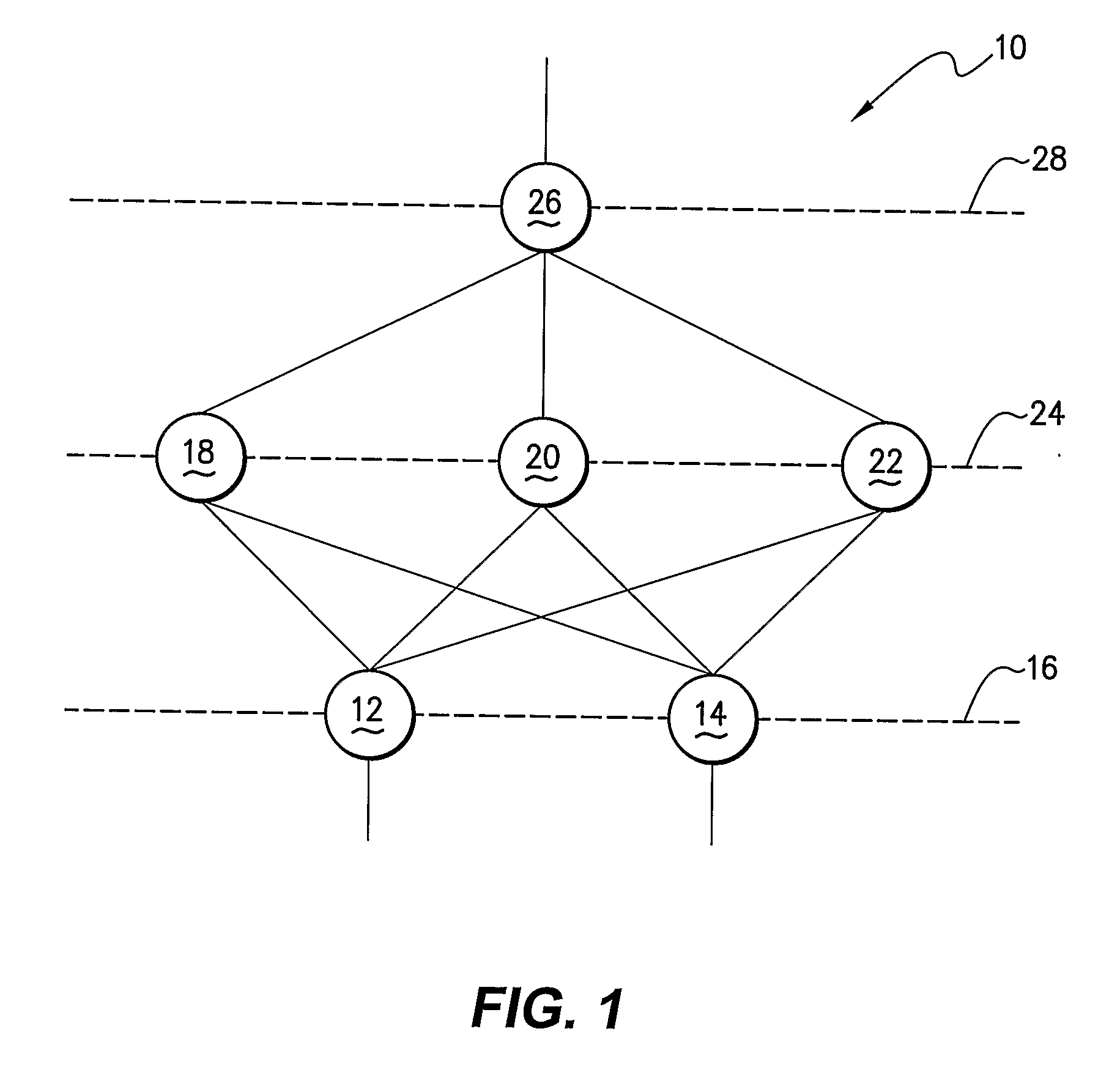Method for Training Neural Networks
a neural network and neural network technology, applied in adaptive control, process and machine control, instruments, etc., can solve the problems of mcculloch-pitt model of neuron, no training rule available that would allow multiple layers of ltgs, and the failure of rosenblatt's learning algorithm to work for more complex data sets, etc., to reduce the performance of nns and simplify the task of rule extraction
- Summary
- Abstract
- Description
- Claims
- Application Information
AI Technical Summary
Benefits of technology
Problems solved by technology
Method used
Image
Examples
Embodiment Construction
[0126]Detailed preferred constructions of the present invention will now be described with reference to the accompanying drawings. By way of a preferred embodiment only, the LTG neuron model will be used for the following discussion. It should be understood that many other neuron models are available and hence could be used to construct NNs in accordance with the DR training method or algorithm of the present invention. The invention is therefore not limited to the specific neuron model shown in the accompanying drawings. Any reference to “LTG” or “LTGs” throughout the ensuing description should therefore be construed as simply meaning “any suitable neuron model”.
[0127]The DR training algorithm of the present invention, along with other aspects of the invention as will now be described can be implemented using any suitable computer software and / or hardware. The present invention is therefore not limited to any particular practical implementation. For the purpose of evaluating the pe...
PUM
 Login to View More
Login to View More Abstract
Description
Claims
Application Information
 Login to View More
Login to View More - R&D
- Intellectual Property
- Life Sciences
- Materials
- Tech Scout
- Unparalleled Data Quality
- Higher Quality Content
- 60% Fewer Hallucinations
Browse by: Latest US Patents, China's latest patents, Technical Efficacy Thesaurus, Application Domain, Technology Topic, Popular Technical Reports.
© 2025 PatSnap. All rights reserved.Legal|Privacy policy|Modern Slavery Act Transparency Statement|Sitemap|About US| Contact US: help@patsnap.com



